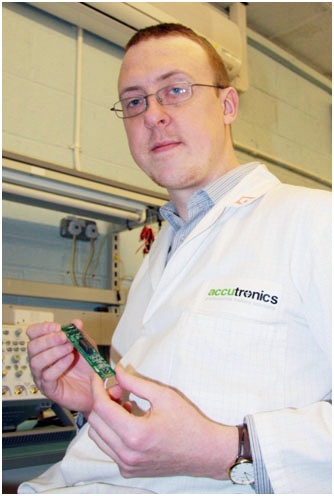We’ve all been there... Just as you turn on your laptop to deliver the key presentation of your entire career, the infernal machine runs out of power and you are left with a blank screen. It’s not possible! You checked the power gauge before you left the office and it said 80% remaining! 
If you work in the battery industry, you have probably already used exactly this analogy to describe the importance of accurate gauging. It’s certainly a story familiar to Carl Banks, one of Accutronics’ fuel gauging experts.
Amongst Carl’s key responsibilities is ensuring that all of Accutronics’ batteries are configured to provide the most accurate gauging possible.
The fuel gauge is a vital part of a professional battery solution. The more accurate it is, the better it can track capacity and the more realistic the device’s predicted run time will be. In mission critical situations, like medical devices and military equipment this can be crucial.
“Of course, there are some applications where the fuel gauge isn’t as important as it is on a medical ventilator or pair of night vision goggles,” explained Carl. “But our customers are leaders in their chosen markets and they demand precise and reliable information whether the battery is brand new or many years old. This is why we test our batteries under various usage scenarios, continually collecting the data that is needed to set-up the fuel gauge. “The most significant environmental factor that affects fuel gauge accuracy is temperature,” Carl continued. “However, we also have to address non-environmental issues such as charge and discharge rates and cycle life. Put simply, the more the battery is used the more its capacity drops over time, and the fuel gauge must account for this behaviour.”
“The most significant environmental factor that affects fuel gauge accuracy is temperature,” Carl continued. “However, we also have to address non-environmental issues such as charge and discharge rates and cycle life. Put simply, the more the battery is used the more its capacity drops over time, and the fuel gauge must account for this behaviour.”
“We use Texas Instruments’ gauges in many of our products,” Carl went on. “The data we gather from our tests is analysed and used in the programming of the fuel gauges’ FLASH memory. The whole process can take many weeks but it ensures we achieve the best possible precision.”
Carl was keen to emphasise the importance of the ‘impedance tracking’ fuel gauge technology that Accutronics use in their smart battery developments. This technology allows the battery fuel gauge to continually make adjustments to its remaining capacity prediction - even when the battery is not being used, by measuring the battery impedance during periods of inactivity. Older ‘coulomb counting’ gauges had to ‘learn’ about a battery by establishing the top of charge and discharge limits first. As a result, a battery fuel gauge that uses impedance tracking is more accurate and can be used for longer without needing to be calibrated – meaning customers can rely on the fuel gauge information and don’t need to spend time fully charging and discharging their devices to obtain accurate information.
So, next time you’re sitting in front of a redundant laptop, wishing you had a more accurate power gauge, spare a thought for Carl and his quest for fuel gauge nirvana, which helps ensure that genuinely mission critical applications don’t suffer the same problems as your laptop.
B is for Banks... and the search for battery fuel gauge Nirvana
[fa icon="calendar"] Sep 9, 2016 2:30:00 PM
Topics: Insider


